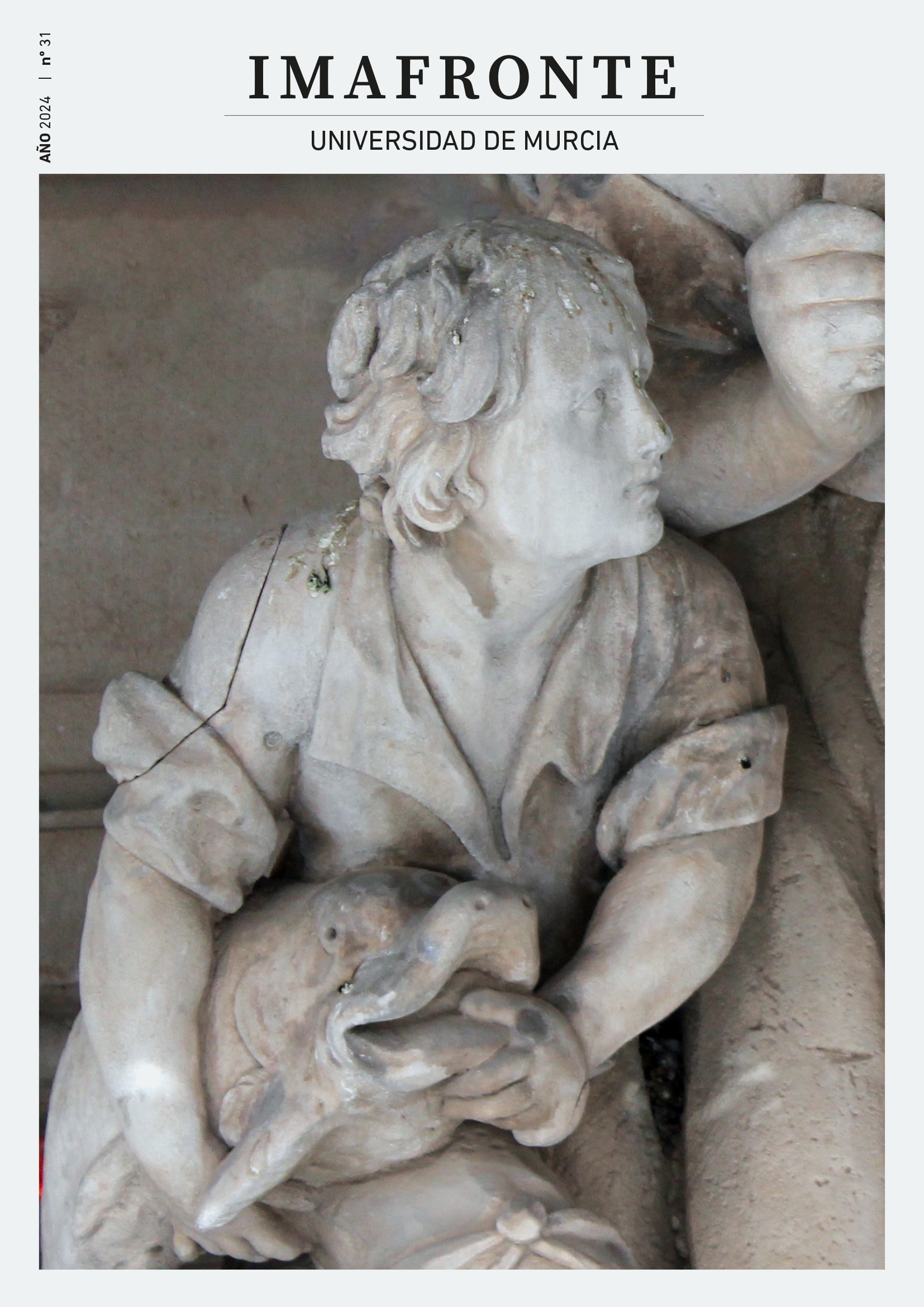Antonio Ramos, Master Architect of Malaga's Diocese. St. Anthony of Padua's Church of Alpandeire
Abstract
Through this paper we intend to address the documented study of the construction project related to the Saint Anthony of Padua’s church in Alpandeire (Málaga). This work is included in the generalized diocesan initiative to reform, in the second half of the 18th century, the architecture of many of its parish temples. The person in charge of offering the traces of the new building was none other than Antonio Ramos, master builder of the Cathedral and then, almost absolute, in the direction of other religious properties of the jurisdictional territory. The historical keys of the process will help to better understand the reality of a property endowed with excessive monumentality for the town that welcomed it, without disregarding the detailed analysis of the structural and ornamental elements in its comparative parallels that concerning other interventions of the architect.
Downloads
References
- Asenjo Rubio, E. (1999). La memoria olvidada. Aproximación al patrimonio pictórico mural de Ronda: siglo XVIII. Boletín de Arte, 20, 525-546.
- Camacho Martínez, R. (1981). Málaga Barroca. Arquitectura religiosa de los siglos XVII y XVIII. Málaga: Universidad.
- Camacho Martínez, R. (1986). Antonio Ramos, arquitecto malagueño del barroco. En El barroco en Andalucía. Conferencias de los cursos de verano de la Universidad de Córdoba, t. III. Córdoba: Universidad, 43-51.
- Camacho Martínez, R. (1992). El manuscrito sobre la gravitación de los arcos contra sus estribos del arquitecto Antonio Ramos. Málaga: Real Academia de Bellas Artes de San Fernando de Madrid y Colegio Oficial de Arquitectos de Málaga.
- Camacho Martínez, R. (1994). La formación clásica del arquitecto Antonio Ramos a través de su biblioteca. En Actas del X Congreso del CEHA. Los clasicismos en el arte español. Madrid: UNED, 523-530.
- Camacho Martínez R. (2001). Intervenciones barrocas en la parroquia de Santiago de Málaga. Cuadernos de Arte de la Universidad de Granada, 32, 159-170.
- Camacho Martínez, R. (2002). Intervenciones en el patrimonio: lectura renovada de la iglesia de San Felipe Neri de Málaga a través de sus pinturas murales. Boletín de Arte, 23, 610-635.
- Camacho Martínez, R. (2005). A propósito de Ventura Rodríguez y la iglesia de San Felipe Neri de Málaga. Atrio. Revista de Historia del Arte, 10/11, 105-112.
- Camacho Martínez, R. (2010). Arquitectos del Barroco en la catedral de Málaga. En El barroco en las catedrales españolas. Zaragoza: Institución “Fernando el Católico”, 233-278.
- Cardiñanos Bardeci, I. (2001). Fondos documentales para la Historia del Arte en Málaga y su provincia. Boletín de Arte, 22, 159-169.
- Gómez Marín, R. (2007). Geografía de la Iglesia de Málaga, tomo II: parroquias fuera de la ciudad episcopal. Málaga: Ruvical Impresores.
- Isla Mingorance, E. (1977). José de Bada y Navajas, arquitecto andaluz (1691-1755). Granada: Diputación Provincial.
- Llordén Simón, A. (1962). Arquitectos y canteros malagueños. Ensayo histórico documental (siglos XVI-XIX). Ávila: Editorial y Gráficas Senén Martín.
- Llordén Simón, A (1988). Historia de la construcción de la catedral de Málaga. Málaga: Colegio Oficial de Aparejadores y Arquitectos.
- Madoz, P. (1845-1850). Diccionario geográfico-estadístico-histórico de España y sus posesiones de ultramar. Madrid: Establecimiento tipográfico de P. Madoz y L. Sagasti.
- Morales Folguera, J. M. (1992). Obras inéditas en Málaga del arquitecto Ventura Rodríguez. Cuadernos de Arte de la Universidad de Granada, 23, 329-339.
- Olmedo Checa, M. (2002). Ante el tercer centenario de don Antonio Ramos (1703-1782). Péndulo: revista de Ingeniería y Humanidades, 14, 164-175.
- Ramírez González, S. (2006). El monasterio de clarisas de Santa Isabel de Ronda. Historia y arte de una clausura franciscana. Ronda: Editorial La Serranía.
- Ramírez González, S. (2022). Los maestros Antonio Ramos y Ventura Rodríguez: diseños para las puertas de la catedral de Málaga. Archivo Español de Arte, XCV-379, 231-250.
- Suberbiola Martínez, J. (1985). La ordenación parroquial malacitana de 1505 y su reformación. Baética: estudios de Historia Moderna y Contemporánea, 8, 311-354.
- Temboury Álvarez, J. (1954). La orfebrería religiosa en Málaga. Ensayo de catalogación. Málaga: Ayuntamiento.
- Temboury Álvarez, J. y Chueca Goitia, F. (1945). José Martín de Aldehuela y sus obras en Málaga. Segunda aportación de datos para el estudio de un arquitecto del siglo XVIII. Arte Español. Revista de la Sociedad Española de Amigos del Arte, XXIX-16, 37-57.
- Tenorio González, Mª. de la P. (2012). Alpandeire y su iglesia. Un recorrido organológico por las pinturas murales. Takurunna, 2, 337-359.
- Vázquez Otero, D. (1928). Alpandeire histórico y sus hijos predilectos. Melilla: Gráficas Ibérica.
Copyright (c) 2024 Sergio Ramírez González

This work is licensed under a Creative Commons Attribution-ShareAlike 4.0 International License.
1. The authors non-exclusively assign the exploitation rights (reproduction, distribution, communication and transformation) to the magazine.
2. The works published in this magazine are subject to the Attribution-ShareAlike 4.0 International license (CC By SA 4.0). Therefore, they can be copied, used, disseminated, transmitted and publicly displayed, provided that:
i) the authorship and the original source of its publication (journal, editorial and URL of the work) are cited, thus allowing its recognition.
ii) it is allowed to remix, transform or create from the material while maintaining the same license as the original.

3. Self-archiving conditions. Authors are allowed and encouraged to electronically disseminate the pre-print (version before being evaluated) and/or post-print (version evaluated and accepted for publication) versions of their works before publication, as it favors their publication. Earlier circulation and diffusion and with it a possible increase in its citation and reach among the academic community. Color RoMEO: verde.

















